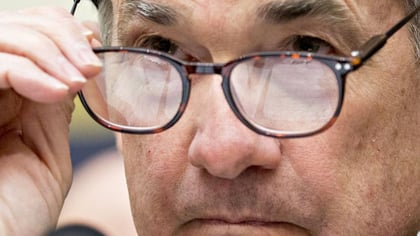 Federal Reserve Chair Jerome Powell (Photo: Bloomberg)
Federal Reserve Chair Jerome Powell (Photo: Bloomberg)
Odds are increasing that the Federal Reserve will cut interest rates for the first time in almost ten years when its policymakers meet next week.
A cut “is possible next week,” says Vanguard senior economist Andrew Patterson. It would be a “bit of shock and awe” and could help ease concerns of an inverted yield curve, which is a good recession indicator 12 to 18 months in the future, explained Patterson.
If the Fed doesn’t cut next week, it’s likely to cut in July, according to Vanguard economists and a growing number of economists at other financial firms.
A July cut would follow the G-20 meeting, set for late June in Japan, when the market will be focused on signs of any progress in U.S.-China trade talks if President Donald Trump and President Xi Jinping meet on the sidelines. That hasn’t been decided yet.
As of late Thursday, June 13, market expectations for a Fed cut next week are near 30% and over 65% in July, according to the CME’s Fedwatch indicator.
Vanguard is one of several firms who have revised their outlook for Fed action this year, abandoning expectations for any rate hikes and moving toward expectations for rate cuts.
Vanguard now expects two rate cuts this year, along with Evercore ISI, while Barclays expects three rate cuts and BlackRock one or two. The consensus among market economists calls for at least one cut this year, according to a recent Wall Street Journal poll. The current federal funds rate, which has held steady since December, is between 2.25% and 2.5%,









 June 13, 2019 at 04:52 PM
June 13, 2019 at 04:52 PM











